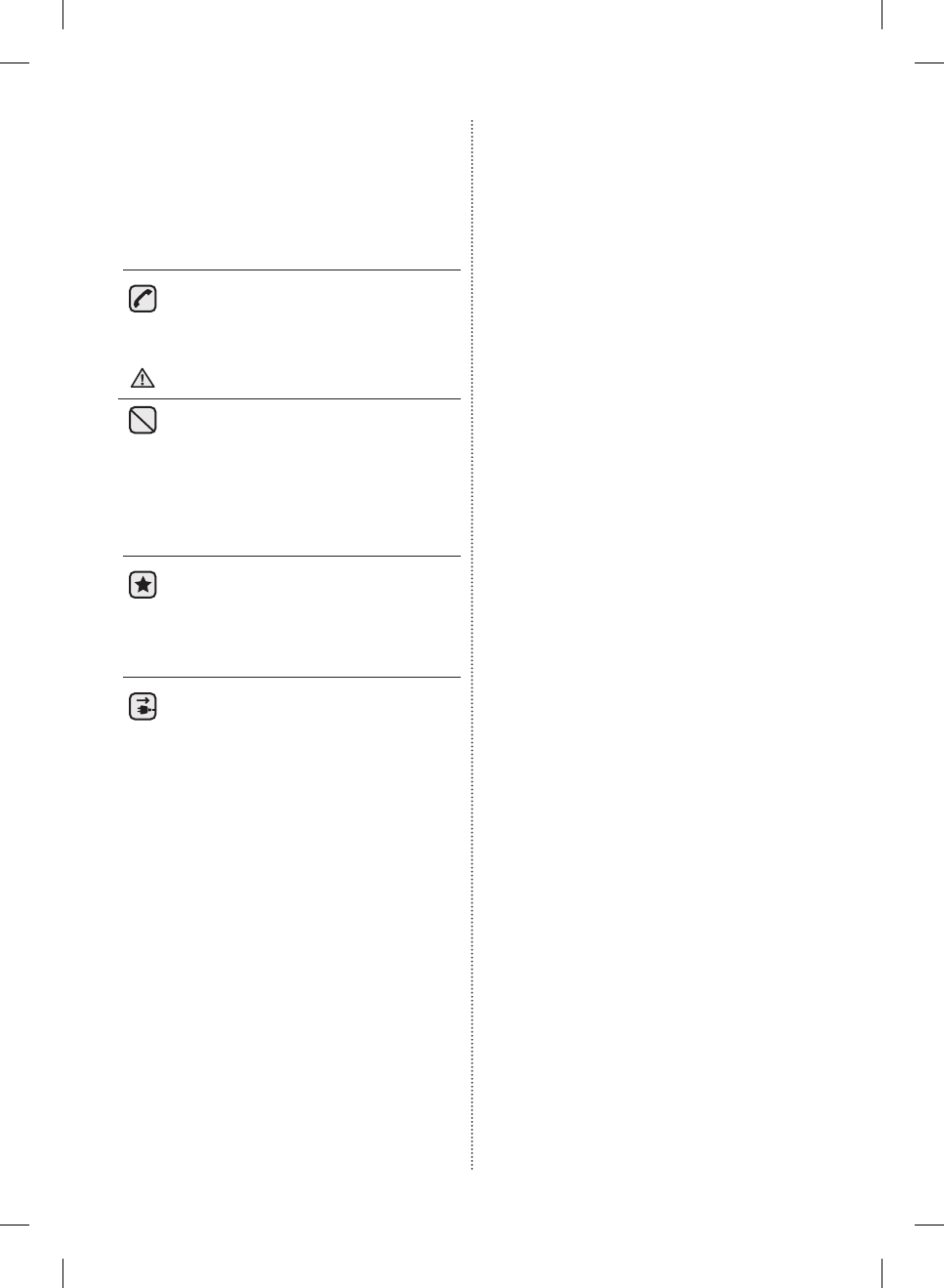
safety information _07
Do not place foods too close to the vents at the -
rear of the appliance as it can obstruct free air
circulation in the refrigerator compartment.
Wrap food up properly or place it in airtight -
containers before putting it into the refrigerator.
Fill the water tank, ice tray, and water cubes •
only with potable water.
• If the product is fl ooded, make sure to
contact your nearest service center.
There is a risk of electric shock or fi re. -
CLEANING CAUTIONS
• Do not directly spray water on the inside
or outside the refrigerator.
There is a risk of fi re or electric shock. -
Do not use a hair dryer to dry the inside of the •
refrigerator. Do not place a lighted candle in the
refrigerator to remove bad odors.
This may result in an electric shock or fi re. -
• Remove any foreign matter or dust from
the power plug pins. Do not use a wet or
damp cloth when cleaning the plug.
Otherwise, there is a risk of fi re or electric -
shock.
• Unplug the refrigerator before cleaning or
making repairs.
Remove all foreign substances such as dust •
or water from the power plug terminals and
contact points using a dry cloth on a regular
basis.
Unplug the power plug and clean it with a dry -
cloth.
Failing to do so may result in an electric shock -
or fi re.
Before cleaning or performing maintenance, •
unplug the appliance from the wall socket.
Failing to do so may result in an electric shock -
or fi re.
Do not clean the appliance by spraying water •
directly onto it.
Do not use benzene, thinner or alcohol to clean •
the appliance.
This may result in discoloration, deformation, -
damage, electric shock or fi re.
Do not spray infl ammable gas near the •
refrigerator.
There is a risk of explosion or fi re.•
Install the appliance in a cool, dry room with •
CAUTION
adequate ventilation.
Ensure that it is not exposed to direct sunlight •
and never put it near a direct source of heat
(radiator, for example).
Never block any vents or grilles on the •
appliance. Allow warm food to cool down
before placing it in the appliance.
Put frozen food in the refrigerator to thaw. You •
can then use the low temperatures of the frozen
products to cool food in the refrigerator.
Do not keep the door of the appliance open for •
too long when putting food in or taking food
out.
The shorter time for which the door is open, the •
less ice will form in the freezer.
Allow clearance to the right, left, back and top •
when installing.
This will help reduce power consumption and •
keep your energy bills lower.
In the event of a power failure, call the local •
offi ce of your Electricity Company and ask how
long it is going to last.
Most power failures that are corrected in an -
hour or two will not affect your refrigerator
temperatures. However, you should minimize
the number of door openings while the power is
off.
But Should the power failure last more than -
24hours, remove all frozen food.
If the key is provided with refrigerator, the keys •
should be kept out of the reach of children and
not be in the vicinity of the appliance.
The appliance might not operate consistently •
(possibility of defrosting of co tents or
temperature becoming too warm in the frozen
food compartment) when sited for an extended
period of time below the cold end of the range
of temperatures for which the refrigerating
appliance is designed.
Do not store food which goes bad easily at low •
temperature, such as bananas, melons.
Your appliance is frost free, which means there •
is no need to manually defrost your appliance,
as this will be carried out automatically.
Temperature rise during defrosting can comply •
with ISO requirements. But If you want to
prevent an undue rise in the temperature of
the frozen food while defrosting the appliance,
please wrap the frozen food up in several layers
of newspaper.
Any increase in temperature of frozen food •
during defrosting can shorten its storage life.
Do not re-freeze frozen foods that have thawed •


















